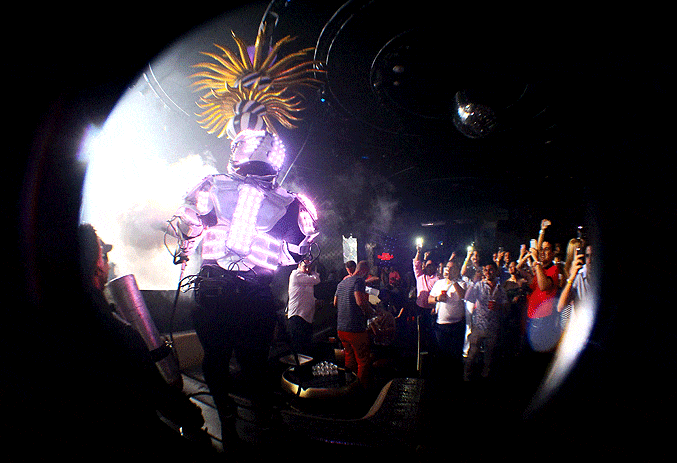words Alexa Wang
The mere mention of certain conspiracy theories, or even just the words themselves, often raise eyebrows and elicit smirks from our acquaintances. This can be disheartening when the topic is something you feel passionately about, and it can easily make even the most educated people stumble over their words and sound mad.

One of the best ways to handle these reactions is to remain calm and collected and provide information from respectable sources. When speaking to someone that is determined to pick apart your argument, they will latch onto any questionable sources you provide, which can make your entire argument crumble before your eyes. Finding new and respectable sources of information can be a mine field, so we’ve put together our top tips for separating fact from fiction.
Wild Theories That Were Proven To Be True
The world is filled with real conspiracies that can turn our stomachs or leave our mouths agape. After all, a conspiracy is merely defined as an unlawful or unethical scheme being enacted by a person or group in secret, and you’d be very hard-pressed to believe that’s a rarity. There are plenty of theories out there though that are so wild and crazy that it’s almost impossible for the average person to not roll their eyes when confronted with it. However, some of these crazy theories and secrets have come to light as being perfectly true. For example, the CIA project MKultra was revealed to be true. This was their secret mind control program which went on for around 20 years or so, in which they would conduct tests such as giving unwitting subjects high doses of LSD to break down their minds.
Famous Hoaxes
Over the years, centuries in fact, there have been conspiracy theories and rumours that have proven to be grand hoaxes and tricks. If anything, these hoaxes are conspiracies themselves in a way, and it just shows how easy it is for people to fall for these stories. These hoaxes can be harmless and fantastical, such as the Cottingley Fairies, where two young girls tricked the country into believing they’d taken photographs of fairies. These ended up being detailed cut-out drawings fastened into the ground with hat pins, however, many were convinced, including experts. They can also be harmful and manipulative such as the claims told by extremists like Alex Jones in which claims have been made such as the Sandy Hook shooting being staged, and even downright ludicrous claims that Robert Mueller is a demon. Though, it is important to note that some people can seemingly get swept up in their own lies, and in fact end up hoaxing themselves.
Cognitive Bias And You
Another thing to be aware of when tentatively creeping down the rabbit hole, is your own ability to see patterns where there aren’t any. The human brain does it’s utmost best to make sense of everything. This is why we see familiar shapes in clouds and abstract paintings, or assume we’ve heard a ghost saying recognizable words in an audio recording. Our brains cannot handle a messy, chaotic, confusing world, and so it will lead us towards an explanation that is more acceptable than the randomness of light and sound, even if that explanation is highly unlikely or unbelievable. Similar to this cognitive bias, it’s believed that many of us are far more likely to drift towards sources of information that back up our beliefs and ideas as we consciously or subconsciously search for those that tell us what we want to hear. It’s very difficult to get out of this habit, but the best thing you can do is to try to take a step back whenever you’re searching for new resources and assess whether you’re challenging your beliefs or not.

Only Use Trustworthy Sources
This is a difficult task, as it’s easy to be swept up by ideas that widely recognized and trusted sources are corrupt and have ulterior motives. While this might be possible, the chances are they’re much more reliable than some blogs post you’ve found, which you know very little about. At least when it comes to modern media, you can trace authors and find their credentials, which can be very difficult to do on a blog. There are some websites however that evidently cast a critical eye on certain topics. Authors who write with a healthy balance of open-mindedness and skepticism are theoretically much more trustworthy than someone that claims to have all the answers. Search for in depth conspiracy theory analysis sites like UFO Insight to read up on fascinating theories and the analysis of them. Delving into the history of these theories and piecing together a respectable portfolio of unbiased research is essential in dictating whether a resource is trustworthy or not.
Tracing A Rumor
When you are made aware of a new theory or rumor, your first task should be investigating whether or not it’s from a reputable source. Even if you trust the person or site that is providing this information to you, you should still do your research to see if this rumor is merely a retelling of an old disproven conspiracy or a matter of the story becoming twisted over time. Very often, a simple Google search can reveal a myriad of discrepancies in a story. You can also use fact checking resources such as Snopes to get a better idea of the validity of certain topics too.
Conspiracies Aren’t Easy To Get Away With
You should also remember that, while conspiracies do happen, they’re much more rare than we think. As with things like cognitive bias, it’s easy to get embroiled in the world of conspiracies, but if you let yourself get too carried away, you can end up seeing shadows where there aren’t any. What you have to consider is that conducting a convoluted and sinister conspiracy isn’t easy to get away with. The chances are, if the conspiracy is real, it will come to light quite quickly. Theoretically, the more complicated the plot, the more likely it will come to light, and so most conspiracies out there are going to be fairly mundane and nowhere near as earth-shattering as we’d like to believe. That of course doesn’t mean that there aren’t things going on behind the curtain that, if they came to light, would change the world as we know it, but the chances are, there aren’t many of them.
Be Wary Of Social Media And Spam
Something else to be wary of is the world of social media. Spam and chain messages are rife, especially among older users, and it can be easy to get swept up in a lie, especially if it looks like a desperate plea from someone that claiming to have discovered something critical. Recently, lies and deceitful messages about the implementation of 5G and it’s alleged link to Covid-19 plagued the populace and near enough everyone knew of somebody that got duped by these crazy claims. The issue with social media is that it’s very easy to share any story you wish, and once it’s on the internet, people are much more likely to believe it. This is often known, in quite a derogatory way, as Pierre Salinger syndrome. Simply put, this is not a real disorder, it’s merely a term for someone who believes every single thing they read online.









